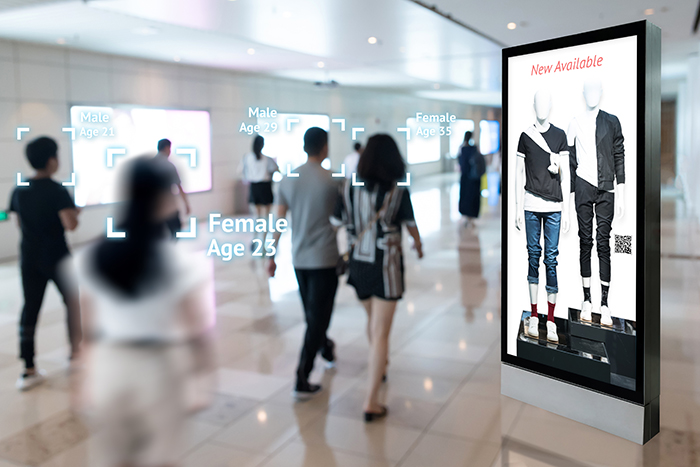Overcoming Retail Barriers to Checkout in Brick-and-Mortar Stores

Once a customer is in a store, what drives them to check out and complete the purchase? What holds them back? These are the main questions puzzling brick and mortar retailers at all times. It is critical to understand why customers buy, why they don’t, and what factors convert customers into buyers.
Historically, the only way to answer these questions was to speculate based on experience, assumptions and instinct, but, with the emergence of artificial-intelligence-enabled technologies for retail, retailers are increasingly able to make business decisions based on quantifiable and actionable data. New retail innovation powered by data from smart sensors – from video cameras to mobile phones – is changing the way retailers engage and convert their customers. Here’s a closer look at how stores are revitalizing digitally and driving checkout.
Digital Transformation for In-Store Retail
The future of retail is decidedly digital, according to Forrester, but that doesn’t mean the brick-and-mortar shop has been reduced to irrelevance. In fact, the reverse is true: Forrester estimates that 86% of U.S. retail sales still happen in brick-and-mortar stores. While retailers should be exploring how to incorporate data-driven solutions, they still need to be careful not to entirely disrupt the in-store experience. By pursuing more nuanced approaches toward collecting consumer demographic and buying habits data, retailers can still facilitate the personal and human experience customers expect in-store.
Smart shelves or video analytics can help you track consumer movement and interactions subtly, while conserving conventional shopping interactions. Understanding common paths and bottlenecks, where consumers dwell and what products they touch and how many consumers convert out of those that enter the store or pass by the entrance, retailers can leverage insight to inform merchandising, advertising and layout strategies to encourage positive experiences and increased conversions.
Video analytics, for example, enables retailers to leverage security surveillance infrastructure to maximize store layout and navigation for enhanced customer experiences. Using artificial intelligence and machine learning technology to structure and visualize video data, retailers can make decisions to improve their bottom line and drive customers to checkout: Repositioning product displays, upgrading advertisements, pricing or loyalty plans and mobilizing associates to engage customers are just a few examples.
Balancing Self-Service and Customer Engagement
Taking a different approach, Amazon is testing the boundaries of the traditional shopping and checkout experiences at the brand’s Amazon Go stores, leveraging innovative computer vision and machine learning applications. Amazon’s “Just Walk Out Technology” entirely removes the checkout phase from the shopping experience. To enter the store, consumers need to download an app, which then tracks their in-store interactions. Affixed to all products and shelves, radio frequency identification (RFID) tags detect when objects are taken from or returned to the shelves and monitors object movement. If the items leave the store, the consumer is charged through the Amazon Go App.
While the Amazon Go model is appealing, it still remains to be seen whether cash register-less stores will see widespread adoption. Non-believers emphasize that, even though Amazon Go stores maintain staff to engage customers, payment is still an important touchpoint in the physical store, which retailers need to be maximizing. Removing this interaction – while more time and resource efficient for shoppers and retailers – would significantly detract from customer engagement. Not to mention impulse buying at the checkout counter.
Still many grocery stores already rely on self-scanning checkout to streamline the payment process. But, for fashion retailers, would this widespread conventional strategy constitute a missed opportunity? Removing the positive interaction between the customer and the store associate could alienate customers or drive them to shop exclusively online.
Managing Queues and Streamlining Checkout
While the role of self-checkout solutions is still being navigated, the value of integrating retail tech still abounds. Technology can and should be leveraged to enhance interactions and complement human cashiers when stores are very busy. The ability to choose to interface with a person or with a self-scanner, mobile payment app or RFID enabled products, gives customers the ability to enjoy the technologically-integrated experience on their terms – benefitting both the retailer and the customer.
Retailers can support this by offering both self-checkout and staffed checkout counters, but also by using analytics to optimize in-store traffic and streamline queues. For instance, a store could leverage its video surveillance and analytics to configure alerting for crowding, so staff can be mobilized to help relieve bottlenecks or open more Point of Sale (POS) machines to accelerate checkout lines. Over time the store can leverage aggregated POS and video data to reveal trends about traffic, queues and store staff, identifying which associates are most efficient for checkout, which times of day and year require more staff coverage and more.
Backed by data intelligence and smart technology, retailers can revitalize the in-store shopping and checkout experience. Revolutionizing payment is just one way retail is evolving, uncovering quantifiable data and trends to better understand consumer behavior and increase profits.
Learn more about Video Content Analytics software and technology by clicking on the image below.
